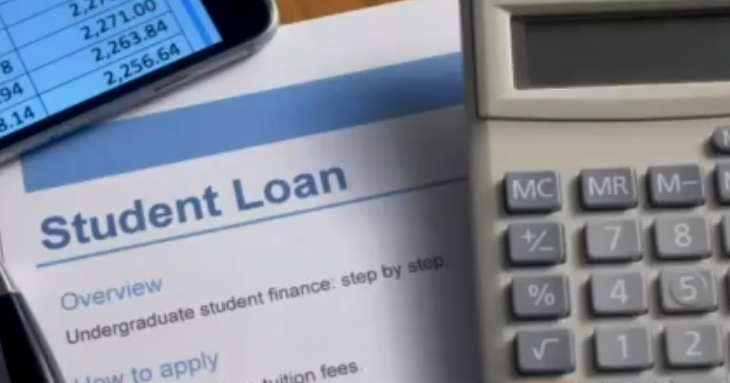Explore web search results related to this domain and discover relevant information.
Are there any taxes on personal loans? Debts aren't taxable income, but if your personal loan is forgiven, you may pay taxes.
The funds you receive from personal loans are generally not considered taxable income unless the loan is forgiven. However, some scenarios allow you to deduct personal loan interest if used in connection with a business.No, a personal loan doesn’t generally qualify as taxable income because it’s a form of debt that must be repaid. Even though you receive all the funds at once, it’s not considered income if you pay it back as agreed.Income made outside of employment, including capital gains on sold assets, some estate or trust distributions and even gambling winnings, is also considered taxable income. The only exception to this rule — when your personal loan may be taxable — is if some or all of your loan balance is forgiven or canceled.If you received a 1099-C form following the cancellation of debt, the IRS received the form, too. Failing to report that income could result in penalties and late fee assessments, or you could be subject to an audit of your federal tax return. In most cases, personal loans are not tax-deductible.

File taxes with H&R Block and receive a same-day tax advance loan of up to $4,000. H&R Block’s Refund Advance loan offers a no-interest and no-fee advantage.
Additional fees, terms and conditions apply; consult your Cardholder Agreement for details. ©2024 HRB Tax Group, Inc. 5 million+ switched to H&R Block in 2024*Go to disclaimer for more details ... Refund Advance loan is a no-interest loan that is repaid with your tax refund.There is no interest and no loan fees charged for the Refund Advance loan. Fees for other optional products or product features may apply. You first must meet certain eligibility requirements such as e-filing a tax return at a participating H&R Block office, expecting a sufficient refund by the IRS and provide appropriate identification.No, the only disbursement options for the Refund Advance loan proceeds are the Emerald Card and a Spruce account. Emerald Card and Spruce allow a one-time transfer of funds by check or automated clearing house (ACH) from your Emerald Card or Spruce account for no fee. ... You will choose a method of repayment at the time of tax preparation.Refund Transfer:*Go to disclaimer for more details For a $42 fee, the loan will be repaid from your Refund Transfer Account, along with tax preparation fees and other amounts you authorize. The remaining funds will be delivered via the disbursement method chosen during tax preparation – Emerald Card, Spruce account, direct deposit, or check.

Taxpayers who can't pay the full amount of federal taxes they owe should file their tax return on time and pay as much as possible. This will help reduce penalties and interest. If they can't pay their full bill, they have some other options. In many cases, loan costs may be lower than the ...
Taxpayers who can't pay the full amount of federal taxes they owe should file their tax return on time and pay as much as possible. This will help reduce penalties and interest. If they can't pay their full bill, they have some other options. In many cases, loan costs may be lower than the combination of interest and penalties the IRS must charge under federal law.If a taxpayer can't get a loan, the IRS offers other options.Tax Tip 2022-52, April 5, 2022 — Taxpayers who can’t pay the full amount of federal taxes they owe should file their tax return on time and pay as much as possible. This will help reduce penalties and interest. If they can’t pay their full bill, they have some other options.Applicants are notified immediately if their request is approved. There is no need for them to contact the IRS for a payment plan or an installment agreement. The agency generally processes online payment plans quicker than requests made with electronically filed tax returns.
This credit provides up to $5,000 in relief for the 2025 tax season. Millions of student loan borrowers face renewed repayment pressure after federal collections and repayment activities resumed in 2025.
Applicants also must have an original student loan principal of at least $20,000 and at least $5,000 outstanding at the time of application. The state allocated a $9 million pool for the 2025 tax year and prioritized certain applicants, including state employees, under program rules.Maryland residents have until Monday, September 15, to apply for the Student Loan Debt Relief Tax Credit.To qualify for Maryland's Student Loan Debt Relief Tax Credit, you must be a Maryland taxpayer who maintained residency for the 2025 tax year and filed a Maryland state income tax return for that year.Millions of student loan borrowers face repayment pressure after federal collections and repayment activities resumed in 2025.

Here's everything you need to know about the tax credit for student loan borrowers in Maryland.

Fast, safe, and secure refund anticipation loan via direct deposit to a checking, savings, or prepaid account. A tax advance loan is based on your actual refund so there is no credit check and no upfront fees to pay. All tax advances are $1,278 less tax preparation fees and $0 finance fee even ...
Fast, safe, and secure refund anticipation loan via direct deposit to a checking, savings, or prepaid account. A tax advance loan is based on your actual refund so there is no credit check and no upfront fees to pay. All tax advances are $1,278 less tax preparation fees and $0 finance fee even if your actual IRS refund is delayed.Taxadvance.com reserves the right to reject a tax loan application except for on the basis of race, color, religion, national origin, sex, marital status, or age (provided the applicant has the capacity to contract); to the fact that all or part of the applicant’s income derives from a public assistance program; or to the fact that the applicant has in good faith exercised any right under the Consumer Credit Protection Act.Please be responsible and consider all refund options prior to applying for a refund anticipation loan. RAC (Refund Anticipation Check), AR (Assisted Refund), and ERD (Electronic Refund Deposit) are tax-related products that allow tax preparation fees deducted from YOUR refund upon completion of services and the balance of the refund disbursed to you by check, direct deposit or a prepaid card.According to the IRS your actual tax refund will be processed within 8-21 days. A Refund Anticipation Loan (known as a holiday tax loan, Income tax advance, instant tax loan, rapid refund, tax return loan, or same day tax refund loan) is not your actual refund.

Millions of federal student loan borrowers will see their forgiven debt taxed as income beginning in 2026. Here's how to prepare your finances now
The twist? Most borrowers have no clue this tax bomb is coming, leaving them woefully unprepared in a precarious position, experts say. The pandemic-era American Rescue Plan Act of 2021 (ARPA) made most federal student loan forgiveness tax-free through the end of 2025.The biggest perk of IDR plans is that if borrowers haven’t fully repaid their loan by the end of the term, the remaining balance is forgiven. Through the end of this year, that forgiveness won’t be taxed as income.Let’s look at an example. Consider a teacher earning $50,000 a year who gets $40,000 in federal student loan forgiveness in 2026. That means her total taxable income is pushed up to $90,000 for the year, bumping her from the 12% tax bracket into the 22% tax bracket.Instead of owing roughly $5,780 in federal taxes on her salary alone, now she owes approximately $15,125 in federal taxes on her combined income — a surprise tax bomb of $9,345. And if she’s in one of the five states that tax student loan forgiveness, she’ll shell out another $2,000 to $4,000 in state income taxes, bringing her total surprise tax burden to over $11,000.

If you plan on buying a used EV, your window for using the tax credit is quickly closing. While an auto loan tax deduction was included as part of the same tax bill that struck EV credits, this deduction only applies to new vehicles — so it won’t make a difference in the used EV market.
Long terms lead to smaller monthly payments, but they also mean more total interest charges over the life of your loan. While a tax credit or other incentive can help when borrowing an auto loan, it’s important to consider how a vehicle will fit into your budget and whether it will meet your needs.APA: Howard, B. (2025, August 25). The used EV tax credit is going away. Should you still buy one? Bankrate. Retrieved September 07, 2025, from https://www.bankrate.com/loans/auto-loans/used-ev-tax-credit-is-going-away/Although this tax credit is ending, there are other benefits, such as the auto loan interest tax deduction, that may be a good alternative for some drivers who are able to buy a new EV instead.From now until September 30, car buyers are in a unique position to qualify for both the standard EV tax credit and the new auto loan interest tax deduction.

New car loan interest on American-made cars and trucks is now tax-deductible. Here's how you can tell whether a new Chevy Silverado for sale is eligible.
President Donald Trump signed the One Big Beautiful Bill Act into law in July, which came with a lot of new car-related regulations and guidelines. One was making auto loan interest tax-deductible for vehicles built in the U.S. GM builds a lot of USDM cars domestically.The new rule from the IRS is quite simple. If the car’s final assembly is in the United States, it’s eligible for tax-deductible loan interest.Simply copy and paste the VIN from the listing into the tool, enter the truck’s model year, scroll toward the bottom of the page, and the section at the bottom labeled “Plant Information” will tell you where it was built. If the truck was built in the States, it’s eligible for the tax deduction.Being GM’s highest-volume product, the Chevy Silverado is built in multiple factories across three countries, so let’s figure out how you can tell whether a specific truck is eligible for the tax break.

The new tax law signed by President Donald Trump creates a federal tax deduction for interest on auto loans.
The new tax break will be available even to people who don’t itemize deductions. But there are some caveats that could limit its reach. The vehicles must be new, not used. They must be assembled in the U.S. And the loans must be issued no sooner than this year, to list just a few qualifications.The law allows taxpayers to deduct up to $10,000 of interest payments annually on loans for new American-made vehicles from 2025 through 2028. It applies to cars, motorcycles, sport utility vehicles, minivans, vans and pickup trucks weighing less than 14,000 pounds, a threshold referred to as light vehicles.Those earning more cannot claim the tax break. ▶ Stay up to date with the latest U.S. news by signing up to our WhatsApp channel. U.S. automobile dealers sold 15.9 million new light vehicles last year, a little over half of which were assembled in the U.S, according to Cox Automotive. It says around 60% of retail sales are financed with loans.After excluding fleet and commercial vehicles and customers above the income cutoff, an estimated 3.5 million new vehicle loans could be eligible for the tax break this year, if purchasing patterns stay the same, said Jonathan Smoke, chief economist at Cox Automotive.
The remaining amount of your federal ... with Credit Karma Money™ when the IRS or state tax authorities (if applicable) distribute your refund. ... When the IRS processes your federal refund, your Refund Advance loan is automatically paid back....
The remaining amount of your federal refund (which is your original federal refund amount minus the Refund Advance and any other elected TurboTax service fees) and/or state refund, if applicable, will be deposited into your checking account with Credit Karma Money™ when the IRS or state tax authorities (if applicable) distribute your refund. ... When the IRS processes your federal refund, your Refund Advance loan is automatically paid back.If your tax refund amounts are insufficient to pay what you owe on your loan, you may be contacted to remind you of the remaining balance and provide payment instructions to you if you choose to repay that balance.If your loan is not paid in full, you will not be eligible to receive a Refund Advance loan in the future. ... Your approved amount is based on the size of your federal refund and your tax information, along with other factors.With your consent, we'll share your tax return information with First Century Bank, N.A. its subsidiaries, and service provider BorrowWorks Financial, Inc., WebBank and its service provider Intuit Financing Inc. and Credit Karma, affiliate of Intuit Financing Inc., via SSL-encrypted transmission. What happens after I'm approved for Refund Advance? If you are approved for a Refund Advance, you’ll be notified by email and the Refund Advance loan amount that you qualified for will be deposited into your Credit Karma Money™ checking account.

Accepting a cash loan beyond Rs 20,000 is prohibited under Section 269SS of the Income Tax Act and a penalty equal to the loan amount can be levied on the person depositing the money in your account
Do you need to file an income-tax return (ITR) if your tax liability is zero? Let’s break it down in today's Ask Wallet Wise query. Moneycontrol’s Ask Wallet Wise initiative offers expert advice on matters of personal finance and money. You can email your queries to [email protected], and we will try and get a top financial expert to address your queries. ... I work as a software developer in a private company. I have taken a couple of loans for one of my relatives, who deposits the EMI amount in cash every month into my account.I have not yet filed my ITR. Is the cash deposited in my account for repaying the EMI taxable in my hands and should I file my ITR? Expert Advice: The cash deposited by your relative for EMI payments in your bank account is treated as repayment of the loan you gave to him.It is not taxable in your hands. It is presumed that after the loan amount was credited to your bank account, you withdrew the money and handed it over to your relative. This amounts to your relative accepting a loan in cash.Similarly, the cash deposited by your relative in your account as repayment of the loan is also prohibited under Section 269T. A penalty equal to the amount repaid in cash can be levied on your relative if the tax department notices the transaction.
We cannot provide a description for this page right now
The deadline to apply for up to $5,000 in relief for the Student Loan Debt Relief Tax Credit for the 2025 tax season is Monday, Sept. 15.
Most taxpayers who apply will get an average of $1,800, according to Kristin Clarkson, the MHEC Director of Communications. Clarkson said that about 85% of people who applied last year received some money. Maryland residents completing a program at a 4-year public institution come out with about $22,000 of debt, and at HBCU institutions, it's about $28,000, according to Clarkson. "Any little bit helps whenever you're paying down those student loans, especially with a lot of people coming back into repayment based on things that are happening on the Federal level," Clarkson said.Maryland student loan borrowers have one week left to apply for a tax credit.The deadline to apply for up to $5,000 in relief for the Student Loan Debt Relief Tax Credit for the 2025 tax season is Monday, Sept.To be eligible, you need to be a Maryland taxpayer who has incurred at least $20,000 in student loan debt.

The funds you receive from personal loans are generally not considered taxable income unless the loan is forgiven. However, some scenarios allow you to deduct personal loan interest if used in connection with a business.
No, a personal loan doesn’t generally qualify as taxable income because it’s a form of debt that must be repaid. Even though you receive all the funds at once, it’s not considered income if you pay it back as agreed.Income made outside of employment, including capital gains on sold assets, some estate or trust distributions and even gambling winnings, is also considered taxable income. The only exception to this rule — when your personal loan may be taxable — is if some or all of your loan balance is forgiven or canceled.If you received a 1099-C form following the cancellation of debt, the IRS received the form, too. Failing to report that income could result in penalties and late fee assessments, or you could be subject to an audit of your federal tax return. ... In most cases, personal loans are not tax-deductible.You also can’t deduct interest paid on personal loans for home improvement since your home doesn’t secure them. That tax benefit is reserved for borrowers who take out home equity loans or HELOCs to pay for renovations, since the property serves as collateral for those types of loans.

These combined events could leave borrowers owing an unexpected tax bill to the IRS. ... Recent delays to student loan forgiveness could leave borrowers with an unexpected tax bill.
Without action from Congress, student loan borrowers who get their debt forgiven under the U.S. Department of Education's income-driven repayment plans, or IDRs, would face a federal tax bill again starting in 2026.Many of these borrowers are likely trying to leave a program in which loan forgiveness is paused or unavailable. Unless the U.S. Department of Education "acts quickly" to forgive the debt of eligible borrowers, they "could face significant tax bills on debt relief that should have been granted to them without penalty," lawmakers, including Sen.The average loan balance for borrowers enrolled in an IDR plan is around $57,000, said higher education expert Mark Kantrowitz. For those in the 22% tax bracket, having that amount forgiven would trigger a tax burden of more than $12,000, Kantrowitz estimates.Borrowers who expect they'll become eligible for student loan forgiveness in 2025 "should save all payment records with their servicers," Nierman said. "If necessary, they can use this information to prove they were entitled to forgiveness during a year in which it is not subject to tax," she said.
Stay updated with the most recent car news, automotive trends, expert reviews, and industry rumors at Autoblog.

Starting next year, student loan borrowers who get their debt forgiven may wind up with a tax bill. Here's what borrowers should know about the changes.
In theory, lawmakers could move to protect the relief from taxes before the end of the year, but borrowers shouldn't count on it, experts say. "Republicans do not like [student loan] forgiveness, and are unlikely to make it tax-free," said higher education expert Mark Kantrowitz.Without action from Congress, student loan borrowers who get their debt forgiven under the U.S. Department of Education's income-driven repayment plans, or IDRs, would face a federal tax bill again starting in 2026.More from Personal Finance: Trump's 'big beautiful bill' slashes CFPB funding 78% say Trump's tariffs will make it harder to deal with debt Tax changes under Trump's 'big beautiful bill' — in one chart · The average loan balance for borrowers enrolled in an IDR plan is around $57,000, Kantrowitz said.They say that borrowers who enroll in IDR plans tend to struggle to keep up with their bills, and that the government's policy often wipes away one's student debt just to saddle them with a tax debt. "Forcing borrowers to remain drowning in debt is cruel," said Persis Yu, deputy executive director and managing counsel at the Student Borrower Protection Center. The "big beautiful bill" did permanently make it so that student loan forgiveness in cases of death or disability are tax-free, Kantrowitz said.
A payment plan is an agreement with the IRS to pay the taxes you owe within an extended timeframe. You should request a payment plan if you believe you will be able to pay your taxes in full within the extended time frame. If you qualify for a short-term payment plan you will not be liable ...
There's also a penalty for failure to file a tax return, so you should file timely even if you can't pay your balance in full. It's always in your best interest to pay in full as soon as you can to minimize the additional charges. Avoid accruing additional interest and penalties · Avoid offset of your future refunds · Avoid issues obtaining loans ·If you're not able to pay the tax you owe by your original filing due date, the balance is subject to interest and a monthly late payment penalty. There's also a penalty for failure to file a tax return, so you should file timely even if you can't pay your balance in full.A payment plan is an agreement with the IRS to pay the taxes you owe within an extended timeframe. You should request a payment plan if you believe you will be able to pay your taxes in full within the extended time frame. If you qualify for a short-term payment plan you will not be liable for a user fee.Last, if you exercise your right to appeal either an IA rejection or termination, the running of collection period is suspended by the time the appeal is pending to the date the appealed decision becomes final. Refer to Statutes of Limitations for Assessing, Collecting and Refunding Tax and Tax Topic No.

While a wide variety of people may qualify for the new auto loan interest deduction, the full tax benefit requires an expensive purchase.
You can claim the deduction whether you use the standard tax deduction or itemize, but only for purchases made from the beginning of 2025 through the end of 2028. To qualify, you must use a secured auto loan to purchase an eligible vehicle for personal use. Eligible vehicles include most classes of vehicles under 14,000 pounds, including cars, minivans, vans, SUVs, pickup trucks and motorcycles.Using that same scenario above, you would multiply 0.22 by the $1,100 you’re paying in interest each year. The result is $242 — that’s how much this new tax deduction will reduce your tax bill for each of the four years. ... While a car loan tax benefit sounds great, most car buyers will only see modest savings from this deduction.Assuming you’re in the 22 percent tax bracket, that would result in a deduction of $242 for the first year. But since most auto loans are amortized, you would likely save a little less each subsequent year.Note that, even in this example, your total interest paid on a $112,000 auto loan will be just under $12,500 for the full six-year term. You will still be far under the annual deduction of $10,000 — limiting your actual savings. You will can benefit from the tax credit, but don’t expect your tax burden to be reduced substantially.




